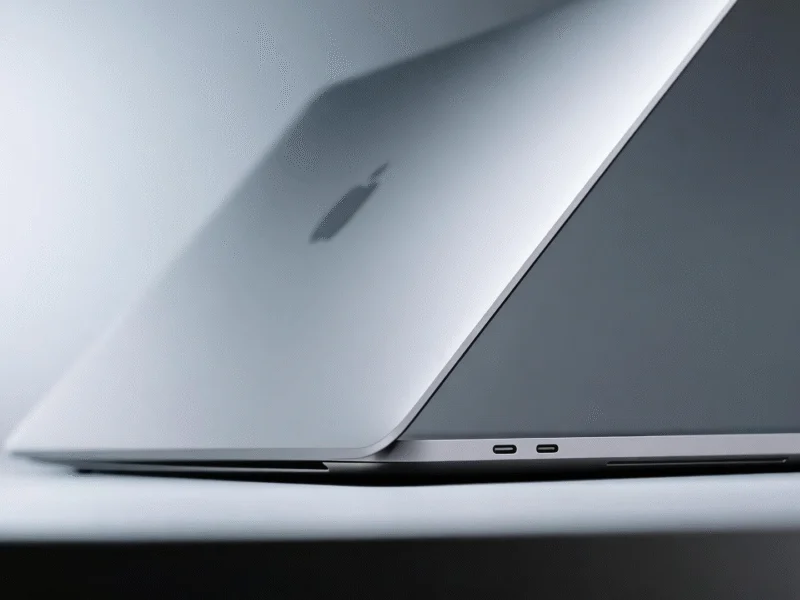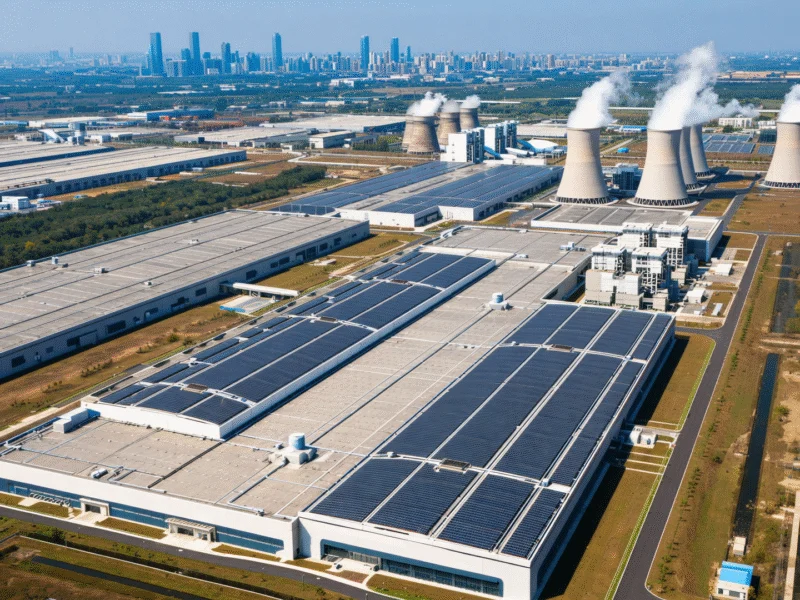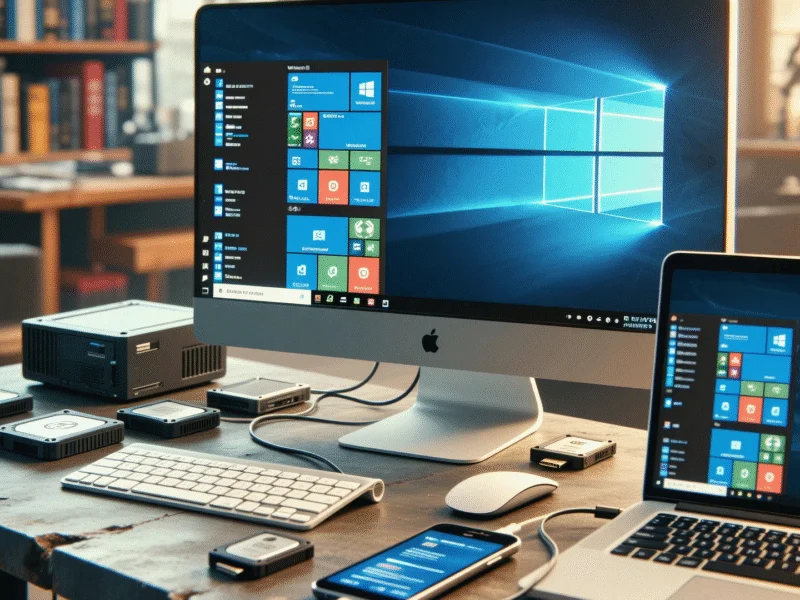In a significant move for professional users, Apple has introduced its latest M5 processor in the baseline 14-inch MacBook Pro, marking the company’s continued commitment to advancing its silicon technology across its computing lineup. This update comes just months after the iPad Pro received the M4 chip, demonstrating Apple’s accelerated release cycle for its proprietary processors. The technology giant continues to push boundaries in the laptop market with this latest offering.
M5 MacBook Pro Specifications and Pricing
The new baseline 14-inch MacBook Pro starts at $1,599, maintaining the same price point as its predecessor while delivering improved performance. The configuration includes the M5 chip with 16GB of unified memory and a 512GB SSD. For professionals requiring more storage, Apple now offers up to 4TB of SSD capacity, doubling the previous maximum storage option. This enhanced storage capability addresses the growing needs of content creators and professionals working with large files and complex projects.
Despite the internal upgrades, the external design remains unchanged from the previous generation. The device continues to feature the same premium aluminum enclosure that has become synonymous with Apple’s professional MacBook Pro lineup. The display also carries forward the 14.2-inch mini-LED Liquid Retina XDR display with 3,024×1,964-pixel resolution, ensuring consistent visual quality for demanding professional workflows.
M5 Processor Performance and AI Capabilities
The heart of the new MacBook Pro is Apple’s M5 processor, featuring 10 CPU cores and 10 GPU cores—the same core configuration as the M4 chip. However, the significant advancement comes from the integration of Neural Accelerators in each GPU core, enabling what Apple claims is up to 3.5 times faster AI performance compared to the M4 chip. This represents a substantial leap in machine learning capabilities, positioning the device as a powerful tool for AI-driven applications and workflows.
When compared to older generations, the performance improvements become even more pronounced. Apple states the M5 delivers up to 6 times faster performance than the M1 chip, demonstrating the rapid evolution of Apple’s silicon since transitioning from Intel processors. These advancements reflect Apple Inc.‘s continued innovation in chip design and system architecture, particularly in the competitive professional computing space where performance demands continue to escalate.
Storage and Battery Life Improvements
Storage performance receives a significant boost in the M5 MacBook Pro, with Apple claiming twice the SSD performance compared to the previous version. This enhancement translates to faster file transfers, quicker application launches, and improved overall system responsiveness. The combination of faster storage and enhanced processing power creates a compelling package for professionals who rely on quick access to large datasets and project files.
Battery life remains exceptional, matching the up to 24 hours of usage offered by the M4 model. This endurance ensures professionals can work through full days without needing to recharge, maintaining the portability advantages that make the 14-inch form factor so popular among mobile professionals. The consistent battery performance despite increased processing power demonstrates Apple’s efficiency improvements in both hardware and software optimization.
Availability and Ordering Information
Customers can pre-order the M5 MacBook Pro starting today, with shipments beginning on Wednesday, October 22. The device is available through Apple’s official website and authorized retailers. This quick turnaround from announcement to availability is characteristic of Apple’s efficient product launch strategy, ensuring customers can access the latest technology without extended waiting periods.
The timing of this release coincides with several other significant technology developments across the industry. Recent reports from industry analysts highlight growing investments in AI infrastructure, while messaging platform expansions detailed in communication technology updates demonstrate the broader context of digital transformation affecting multiple sectors.
Product Line Positioning and Future Expectations
The M5 introduction creates an interesting dynamic within Apple’s MacBook Pro lineup. The baseline model now features newer silicon than higher-end configurations, with the $1,999 14-inch model still utilizing the M4 Pro chip with 12 CPU cores and 16 GPU cores. Similarly, all 16-inch MacBook Pro models continue with either M4 Pro or M4 Max chips, creating a temporary hierarchy inversion within the professional laptop series.
Looking at Apple’s broader portable computing ecosystem, the current iPad Pro maintains its position with M4 silicon, while MacBook Air models also remain on the M4 platform. This staggered release pattern reflects Apple’s strategic approach to product updates across different form factors and price segments. The tablet computer market continues to evolve alongside traditional laptops, with each category serving distinct user needs and preferences.
Broader Industry Context and Implications
Apple’s M5 release occurs against a backdrop of significant technological and economic developments. Recent analyses of business registration patterns reveal interesting trends in commercial technology adoption, while high-profile compensation discussions like the Tesla executive compensation case highlight the financial dimensions of technology leadership.
Economic considerations also play a role in technology adoption cycles, with potential government shutdown impacts affecting purchasing decisions across sectors. Meanwhile, infrastructure developments in satellite internet technology continue to expand connectivity options for professional users who rely on portable computing solutions like the MacBook Pro.
Upgrade Considerations and Future Roadmap
For potential buyers, the M5 MacBook Pro represents an incremental but meaningful update rather than a comprehensive redesign. The absence of design changes or price reductions positions this as a specification refresh focused primarily on performance improvements. Users coming from M3 or earlier models will notice significant gains, while M4 owners may find the upgrade less compelling unless they specifically require the enhanced AI capabilities or additional storage options.
Looking ahead, industry observers anticipate a more substantial MacBook Pro update with the expected M6 chip toward the end of next year. Rumors suggest this future iteration might introduce a touchscreen OLED display alongside a redesigned chassis and potentially thinner form factor. These anticipated changes would represent the kind of comprehensive redesign that many professionals have been awaiting, combining both internal performance improvements and external design innovations.
For now, the M5 MacBook Pro serves as a capable interim solution that maintains Apple’s competitive position in the professional computing market while laying groundwork for more transformative changes in the coming years. The device continues Apple’s tradition of balancing performance, battery life, and build quality while gradually incorporating new technologies that enhance the professional user experience.



